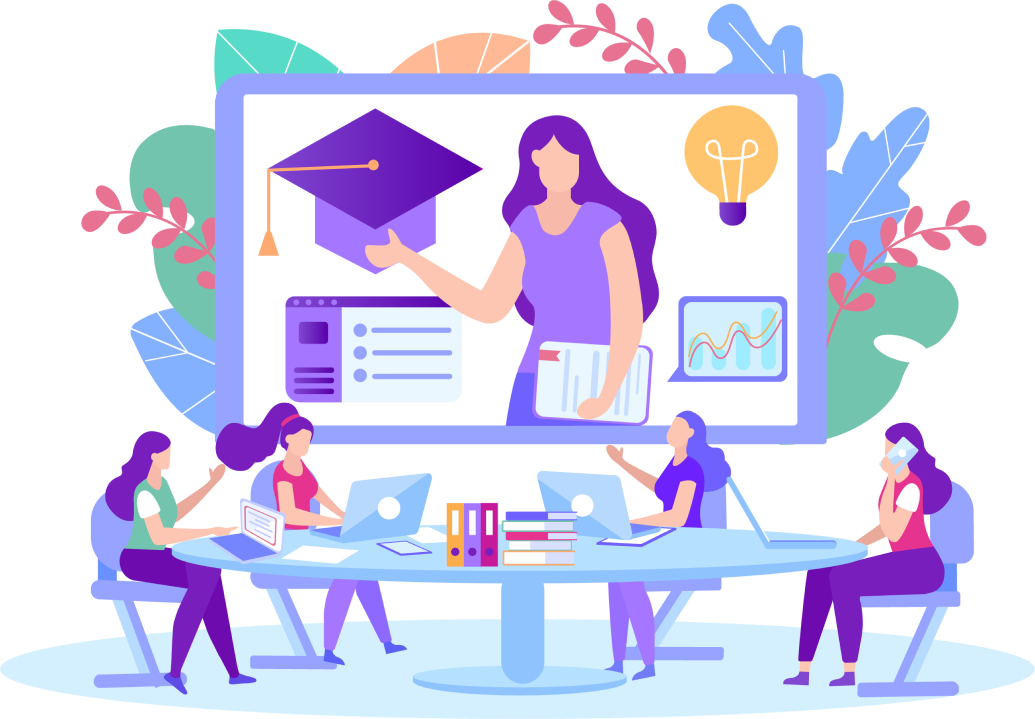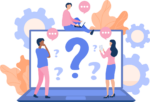For your training programs to meet their goals, they must support learning for everyone in the company. Diversity is healthy in a corporate culture, and if you’re lucky, you’ve managed to hire top talent, regardless of the software accessibility tools they may require to perform their job roles.
When it’s time to train your workforce, an enterprise learning management system can ensure training is:
- coordinated,
- standardized, and
- accessible.
But first, you must choose a training management system that can deliver the assistive technologies that make training and course creation enjoyable for everyone on the team.
Let’s explore enterprise learning management systems and how they support inclusivity, compliance, and a superb user experience when they’re designed with accessible learning in mind.
Importance of software accessibility
You might not have considered accessibility in your online courses before, but building an inclusive workplace learning culture is vital to ensuring employees of all abilities feel valued.
Imagine a visually-impaired employee struggling to navigate a course without screen reader compatibility. This could significantly hinder their learning experience and make them feel excluded from the learning process.
An enterprise LMS is ideal for accessible learning, offering remote and mobile learning opportunities that make it easy for everyone to participate. Plus, online learning platforms promote social learning, a positive feature that helps foster an inclusive corporate culture.
When you choose an accessible LMS, you’re choosing a learning environment that’s comfortable for all learners, no matter their learning needs. You can create and manage online courses knowing your efforts will encourage education and professional growth for all learners.
Understanding accessibility standards
When you’re choosing an LMS, it helps to understand what’s required in the software to meet current accessibility standards. We’ll start with the WCAG.
Web Content Accessibility Guidelines (WCAG)
WCAG is a set of guidelines developed to ensure that web content is accessible to all users, including those with disabilities. The latest version, WCAG 2.1, focuses on 4 key principles: content must be Perceivable, Operable, Understandable, and Robust.
For an LMS, adhering to WCAG means ensuring that individuals with a variety of disabilities can use the platform as quickly and easily as anyone else. For example, the LMS might need to provide text alternatives for non-text content or ensure the platform is accessible via a keyboard rather than relying on a mouse for navigation.
With WCAG in place, your enterprise LMS becomes inclusive, allowing learners with visual, auditory, cognitive, and motor impairments to fully participate in your learning programs.
Meeting legal accessibility requirements
Compliance with WCAG also helps your company meet legal requirements related to accessibility, like the Americans with Disabilities Act (ADA) and Section 508 of the Rehabilitation Act in the United States.
A commitment to accessibility can also improve your company’s reputation as a workplace culture that prioritizes equity and inclusion.
On the other hand, if your LMS is not accessible, it can send a negative message about your company’s commitment to diversity and inclusion, potentially damaging your brand image and reputation.
Key features of an accessible LMS
Not all workplace learning software is created with accessibility in mind. When you know what to look for in an LMS, choosing accessible software is more straightforward. The hallmarks of an accessible LMS include:
A user-friendly interface
A clean, easy-to-navigate user interface ensures your chosen LMS meets accessibility standards. Simple interfaces accommodate all users better than fussy ones, making it easier to find information or navigate to the right section of the website. Learners with visual impairments or difficulties processing visual input can find the data they need quickly with a clear, user-friendly interface.
Customizable accessibility options
An exceptional LMS allows you to customize features like the text size and contrast settings in your training courses, making it more accessible to users with various needs. Plus, it ensures that all content is compatible with screen reading software. Your LMS should also allow for multimedia accessibility through features like image captions, video transcript generation, and audio descriptions of multimedia content.
Evaluating an enterprise LMS for accessibility
When selecting an LMS, you need to be confident that the software meets high accessibility standards. Here are a few ways to be sure your LMS is accessible before you commit:
Accessibility statements and certifications
Check for accessibility certifications and compliance statements from the LMS provider. If these are in place, it indicates the LMS has reached peak accessibility.
Demo and trial periods
Any reputable LMS should allow (and encourage!) you to test the software during a trial period. As you use this time to test the bells and whistles of the LMS, pay special attention to the accessibility features on offer. Make sure that the LMS makes it easy for every user to engage with the software.
You can’t predict the needs of new hires, so aim for accessibility in every aspect of the LMS, from user management to learner engagement. That way, you’ll know all your learners can access the material they need, no matter where their personalized learning paths take them.
Vendor transparency
If an LMS you like isn’t fully accessible, talk to the software development team about it. A newer LMS might still be working on accessibility in their software and looking for ways to add or improve features that address client needs.
Plus, the dev team’s openness to suggestions and ideas about accessibility is a good indicator of how they’ll welcome other updates and feature requests. A team that’s receptive to new ideas and responsive in its development cycle is a worthy partner, even if a few of your must-have features are still in development.
Conducting an accessibility audit
If you’ve already purchased an LMS, an accessibility audit will show you whether your LMS meets accessibility standards and where your software falls short. There are several ways to conduct an audit, and your organization may use a combination of tactics.
Third-party evaluation
An independent audit by accessibility experts will give you an honest evaluation of your LMS. To conduct a third-party review, you’ll need to work with experts in the field who aren’t connected to your business.
User feedback
Ask users with disabilities within your organization to test your LMS. Their feedback is invaluable for pinpointing areas where the LMS needs accessibility improvement.
Accessibility tools
Online tools like WAVE, Axe, and Lighthouse can help you evaluate your learning management system against accessibility standards. These tools are up-to-date with the latest requirements, so you can be sure you’re working from the right playbook.
Technical considerations for accessibility
The best enterprise LMS allows you to create courses, organize learning content, and build custom reports that automatically meet accessibility standards. If these technical aspects of software accessibility are in place, creating accessible course content is more straightforward.
Semantic HTML and ARIA landmarks
HTML tags and ARIA landmarks are code-based indicators that tell the software where information is stored or linked in an LMS.
These elements play a crucial role in making an LMS accessible. For instance, semantic HTML enables screen reading software to interpret the content correctly, while ARIA landmarks provide navigation cues for users with visual impairments. They help users of all abilities navigate the LMS quickly and easily.
Here’s one good example: following a distinct heading structure (H1, then several H2s, with H3s nested under those). Following a systematic heading protocol lets assistive technologies better communicate the course materials to their users.
Responsive design
A mobile-friendly LMS makes it easier for users of all abilities to access their courses in an environment and on a device that suits their needs.
Employees using assistive devices and specialized software will likely want to use that device for online learning. Your LMS should adapt to work beautifully with any device and screen size for an exceptional learning experience.
Integration capabilities
Many learners with disabilities use assistive technologies and tools to make software work for them. It’s vital that your LMS is compatible with these services so each employee in your organization can enjoy unfettered, hassle-free learning.
If the technical side of software is outside your wheelhouse, talk to your IT department. They can help you understand how to choose an LMS that meets these technical aspects of online accessibility.
Support and training from the provider
An LMS company that focuses on accessibility will provide its customers with training and materials that support access to learning for all.
Training materials
Make sure you have access to training materials and resources that explain how to use the LMS’s accessibility features. They’re no good if you don’t know how to use them!
Continuous improvement
Look for a vendor committed to updating and improving accessibility features. Ask how often they provide these and what they plan for future code updates.
Accessibility – the legally responsible, ethical approach to online courses
Not only is enterprise LMS software legally required to meet accessibility standards, but partnering with an accessible LMS creates a culture of inclusion for your employee training. Your e-learning courses will be available and attainable for every learner, making it clear to your workforce that every learner is valued and included.
Embrace an ethically-sound, accessible LMS because it’s the right thing to do. And the right enterprise LMS to help you do that is LearnRight, of course!
Book a demo of LearnRight today and discover the enterprise learning management system that values and supports every learner.







